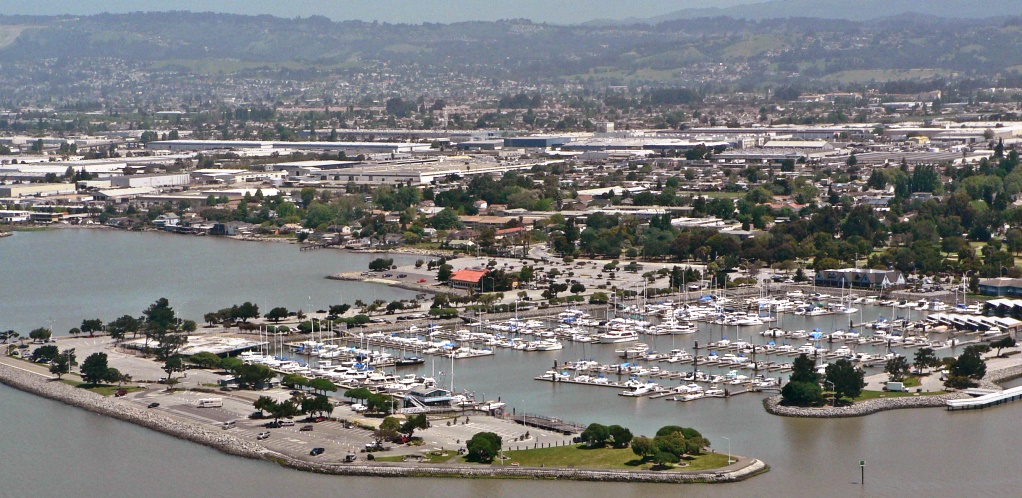Re-industrialization with clean industries is emerging as the right revitalization strategy for many “post-industrial” communities.
Manufacturing jobs tend to create between 3 – 15 spin-off jobs via the multiplier effect. Contrast this with service-based employment, which seldom creates any spin-off jobs at all.
In San Francisco, California, the former site of the Hunters Point shipyard is now being developed with over 10,000 units of housing, 2.6 million square feet of office and R&D space, and about a half million square feet of retail.
The project will also include about 75,000 square feet of maker space, or less than 1% of the total building area, most of which will probably go to artisanal firms making food, fashion and furnishing, things like beer, bread and bicycles, sold to the upscale consumers of the region.
Meanwhile, in San Leandro, about ten miles almost directly east across the bay, there’s something far more significant going on: an under-the-radar renaissance of industrial production, in which companies making state-of-the-art products sold around the world are taking over factories and warehouses.
The Hunters Point redevelopment is an extreme example of gentrification, the conversion of a former jobs center to “hipster” uses.
In contrast, the next-generation industry in the East Bay brings new money into the local economy and creates skilled, middle-class jobs.
If we want to get more of the latter, we need to understand and support what is going on there.
One of the central questions is how skilled technicians, not engineers, but production workers can afford to live within reasonable commute distance of these places. One answer is that these jobs pay well enough for workers to live nearby, or to endure a moderate commute.
For skilled machining, the jobs can easily pay $50,000 to $100,000 a year. That has helped companies like PCC Structurals lure machinists out from Detroit.
A looming question is what these companies will do when the Baby Boom dies out. At that point, they will need to hire skilled younger people, something they have had a hard time doing so far.
For example, when Bayer wanted to expand its biopharmaceuticals production in Berkeley, it could not find enough technicians. That expansion instead went to Germany, the loss of a new $700 million investment. There is so little attention to industrial production in the Bay Area that that loss barely made the news.
To avoid gentrification, we can’t simply subsidize housing costs but need to increase the spending power of the working people, by training them for higher-paid work.
Here’s a bit of background on San Leandro’s economic history and recent revitalization attempts:
The city has long been home to many food processing operations, and is home to many corporate businesses such as JanSport, The North Face, Ghirardelli, OSIsoft, Otis Spunkmeyer, and a Coca-Cola bottling plant. Maxwell House operated a coffee roasting plant—where the Yuban brand was produced, from 1949 until 2015—when it was closed as part of a cost-cutting plan instituted by parent company Kraft Foods.
Under Mayor Stephen H. Cassidy, the city set the goal in 2012 of “becoming a new center of innovation in the San Francisco Bay Area.” San Leandro came “out of the downturn like few places around, attracting tech startups, artists and brewers to a one-time traditional industrial hub.”
In January 2011, Cassidy and Dr. J. Patrick Kennedy, a San Leandro resident, and president and founder of OSIsoft, one of the City’s largest employers, “began developing the public-private partnership that would become Lit San Leandro,” a high speed, fiber optic broadband network. In October 2011, the city approved the license agreement that allowed the installation of the fiber-optic cables in the existing conduits under San Leandro streets.
In 2012, San Leandro was awarded a $2.1 million grant from the U.S. Economic Development Administration to add 7.5 miles to that network. By 2014, the network expansion was completed bringing the total length of fiber in the city to over 18 miles. The network is capable of transmitting at up to 10Gbit/s and is currently only available to business users.
The Zero Net Energy Center, which opened in 2013, is a 46,000 square foot electrician training facility created by the International Brotherhood of Electrical Workers Local 595 and the Northern California chapter of the National Electrical Contractors Association. Training includes energy efficient construction methods, while the facility itself operates as a zero-energy building.
So, it seems that San Leandro has done a decent job of positioning itself for revitalization via clean reindustrialization.
Featured 2006 photo of San Leandro is by Walter Siegmund via Wikimedia Commons.

